




Your cart is currently empty.

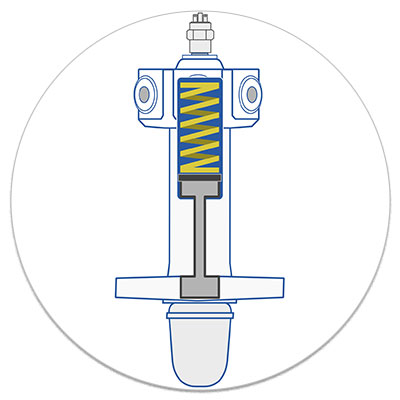
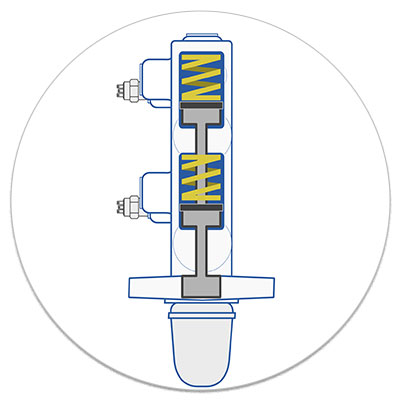
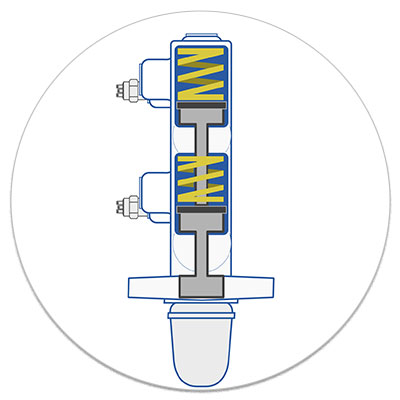
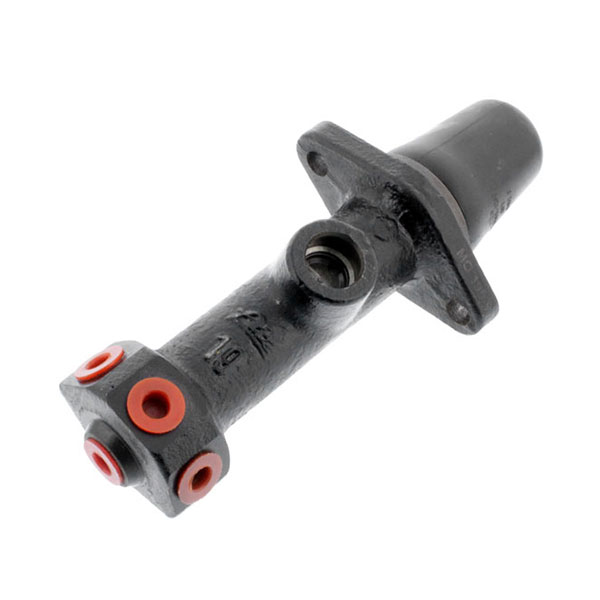
Note: Despite the multiple outlets (front right, rear, front left & brake light switch) this is a single- circuit master cylinder. All the lines and switch are pressurized by the same circuit, if one port loses pressure, the others will as well.
A single circuit master cylinder one chamber within the center bore. The master cylinder has multiple outlets, but there is a single piston that operates the braking system and the brake light switch. So, all four drums are both on the same circuit.
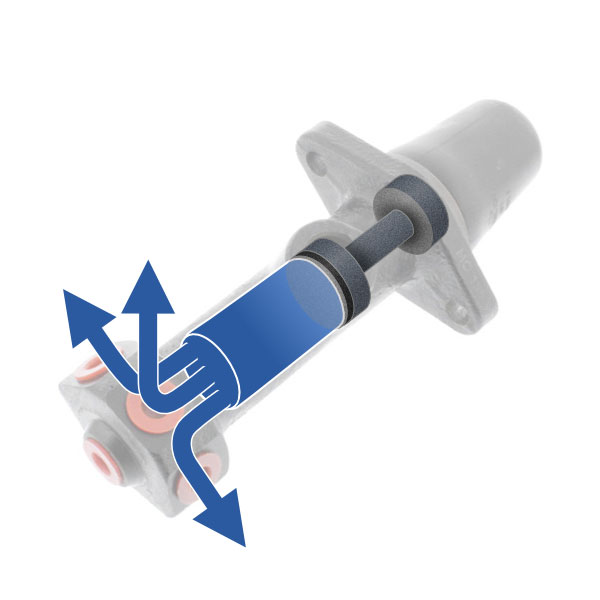
If you have an early car, a single-circuit master cylinder is what came stock on the vehicle. All the other components from the brake fluid reservoir, brake lines and brake light wiring harness are designed to be used with the stock master cylinder. So, if your original master cylinder needs to be replaced, installing an original replacement is a fairly simple task and modifications to other stock components won’t be required.
A single circuit master cylinder has is a single unit with no “backup”. So if a wheel cylinder, brake line, hose, fitting or switch develops a leak and loses pressure, all of your brakes fail. If this does happen, you can only hope to be able to downshift and engine brake the car to slow it down a bit and hopefully your parking brake is working properly!
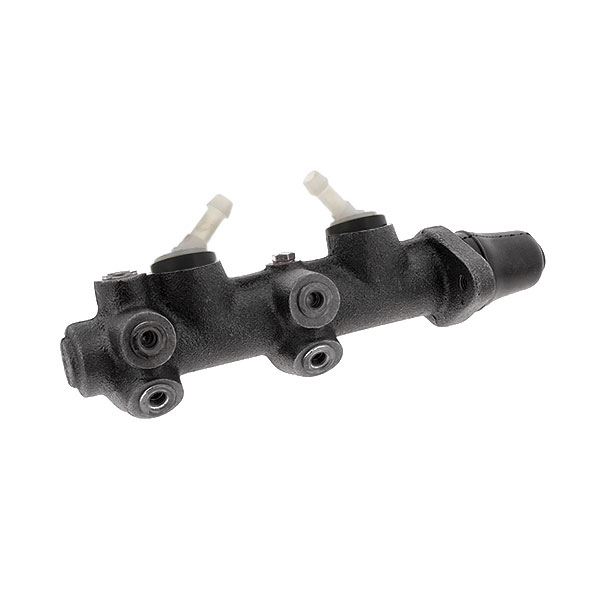
Note: Dual circuit master cylinders have two inlets from the brake fluid reservoir. The three outlets at the end are for the front right, front left and a brake light switch. The outlets in the middle are for the rear brakes and another brake light switch. A dual circuit master cylinder has separate chambers for the front and rear brakes.
A dual circuit master cylinder has two separate chambers inside the center bore, each with its own inlet. Two pistons push on the cambers to operate the front brake chamber and the rear brake chamber. The two chambers are isolated and independent of each other. The front brakes, and a brake light switch are operated by the front chamber. The rear brakes and another brake light switch are operated by the rear chamber.
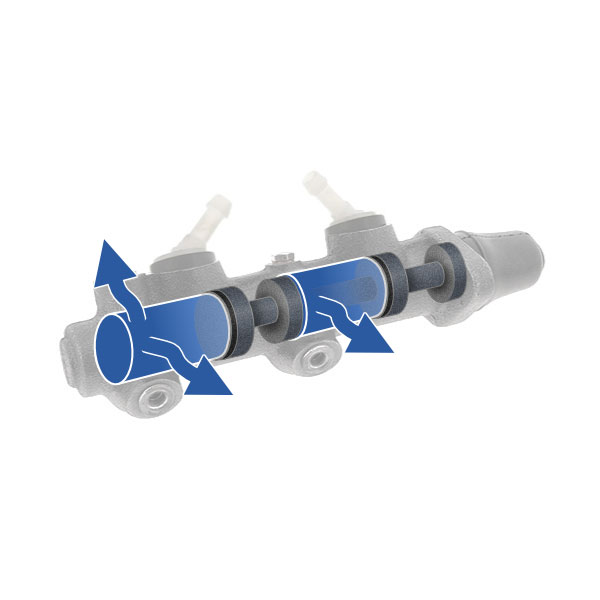
A dual circuit master cylinder has a built in "backup" with separate front and rear brake systems. If your front left wheel cylinder fails, you still have the rear circuit and you still have rear brakes. Sure, the rear brakes aren’t as effective as the front brakes, but they are better than no brakes at all and should get you slowed to a stop safely in the event of a front brake failure. VW (as well as most all other auto manufacturers) realized that having separate brake circuits was a good idea and in 1967, all VWs had dual circuit brake systems from the factory.
For late model VWS, designed to be used with a dual circuit master cylinder, there are none that we can think of. The vehicle was designed with it, it’s safer than a single circuit, it is the best option.
For early model VWs, reshaping or replacing steel brake lines may be required. An additional brake light switch (or plug) for the second brake light switch port is also required. It can just be used as a plug or wired in series with the first switch. Most importantly, the stock, single feed line from the original master cylinder is much smaller than the dual circuit inlets, and there are two inlets. So the single small line must be adapted and connected, usually with a Tee fitting to larger hoses to feed the master cylinder. The multiple hoses and fittings can lead to leaks, which could allow air into your brake system. If air enters the brake system, it must be bled out which, not fun!
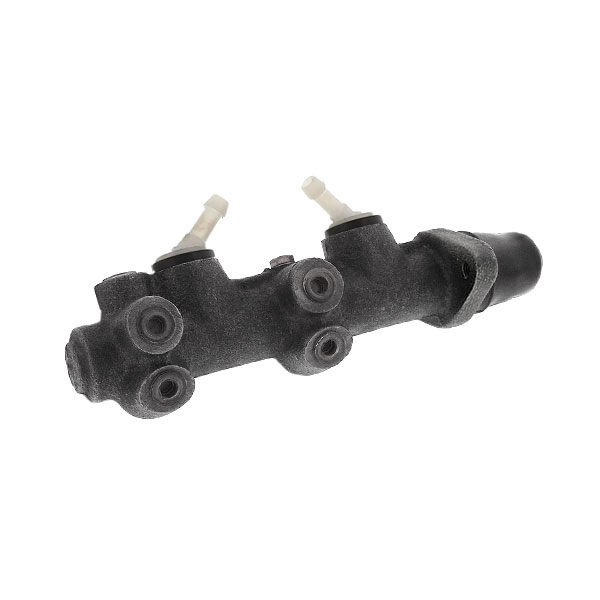
Note: Externally, most classic VW Large Bore master cylinders do not look any different than the master cylinder they replace. The difference is internal.
A large-bore master cylinders, as its name implies has a larger internal bore than the stock master cylinder it is intended to replace. The larger bore holds and pushes more fluid through the system.
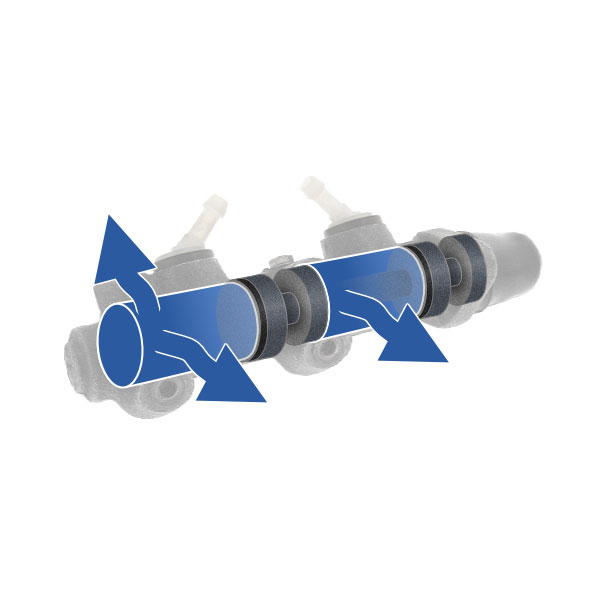
A large bore master cylinder will make a vehicle with stock drum brakes have a firmer pedal. The pedal doesn’t have to move as far in order push the same volume of fluid as a stock master cylinder. It can more appropriately be used when installing disc brakes, as brake pistons have larger pistons than wheel cylinders. The larger pistons require more fluid to operate, so a large bore master cylinder is often recommended (but not necessarily required) when swapping to front disc brakes. However, if you’re swapping to 4 wheel disc brakes a large bore master cylinder is a requirement, not a recommendation.
Large bore master cylinders are available in single and dual circuit variations so all of the above information still applies. Obviously a dual circuit master cylinder is the safest best but there are some circumstances where a large bore, single circuit master cylinder may make sense.
A large bore master cylinder has a larger pistons and pushed more fluid. When combined with drum brakes, you'll actually need to apply a more pressure to the brake pedal. Think of it like putting your finger over the end of a garden hose, the force builds on the hose (and wants to push your finger clear of the end) and the water shoots out further due to the increase in pressure. As noted, when combined with 4 wheel drum brakes, the difference is noticeable. When used with 4 wheel disc brakes though, due to the larger pistons in the calipers, the pedal feel is similar to a stock master cylinder with drum brakes.
The difference between a car and a missle is brakes.
You may have noticed we sell German, Brazilian, and Chinese made Brake Master Cylinders. There is much discussion as to which is best, but our experience is they all serve different purposes. German is considered by purist to be better quality, but is limited to stock applications and comes with a hefty price tag. We run Brazilian made Brake Master Cylinders in our cars because they are budget priced without any compromises. Lastly, Chinese master cylinders are included with some EMPI disc brake kits, and are a solid solution when a big bore master cylinder is required. So which Master Cylinder should you buy? It all depends on your application and what you are going for.
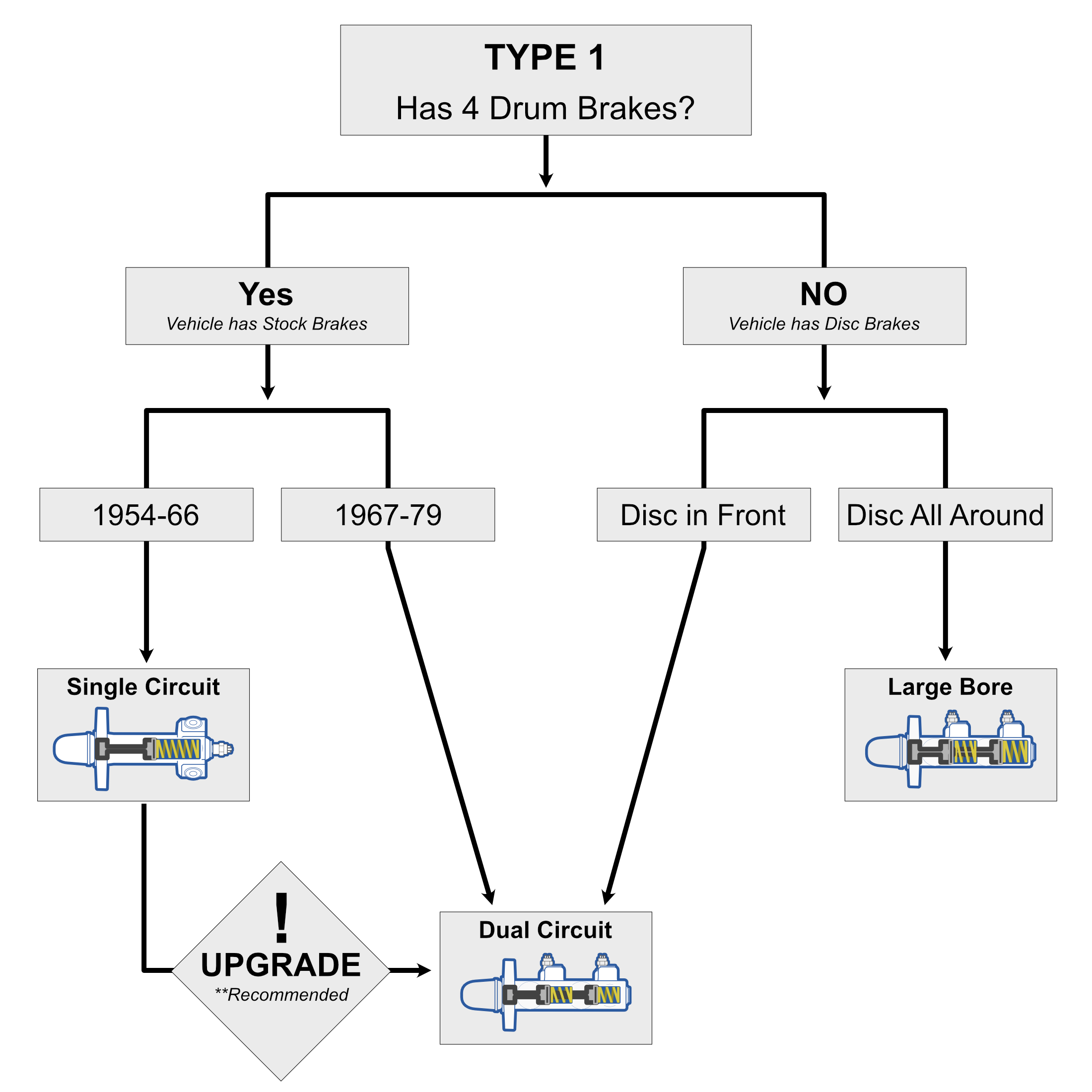
We recommend upgrading to a dual circuit master cylinder and a fairly simple upgrade is changing the brake fluid reservoir to a direct mount reservoir. This is only possible on the Large Bore and the Brazilian made late model Beetle master cylinders. The only drawback is that the fill port on this reservoir is underneath the fuel tank.
There are further modifications that can make this option easier to use. One we have done is drilling a hole in the top of the reservoir, installing a grommet, and then using the stock reservoir as a funnel of sorts. Just be cautious not to over fill the lower reservoir or it will leak through the vented cap.
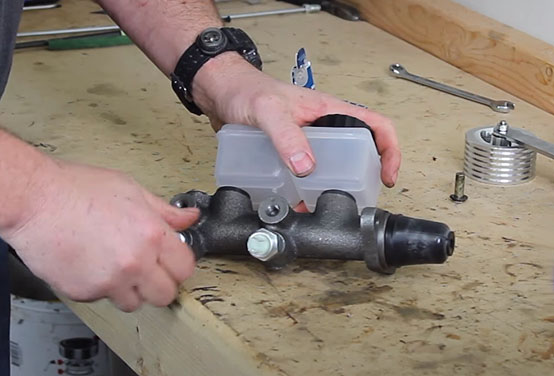

Copyright © JBugs.
All rights reserved. All images protected by US and International copyright laws. No part of this website may be reproduced, distributed, or transmitted in any form or by any means.
All Prices subject to change without notice or obligation. Not responsible for typographical or photo errors. "Volkswagen", "VW","Beetle", "Super Beetle", "Bus", "Ghia", "Type 2", "Type 3", "Thing", "Rabbit", "Cabriolet", "Jetta", and "Golf" are trademarked by Volkswagen of America and are used for descriptive purposes only.